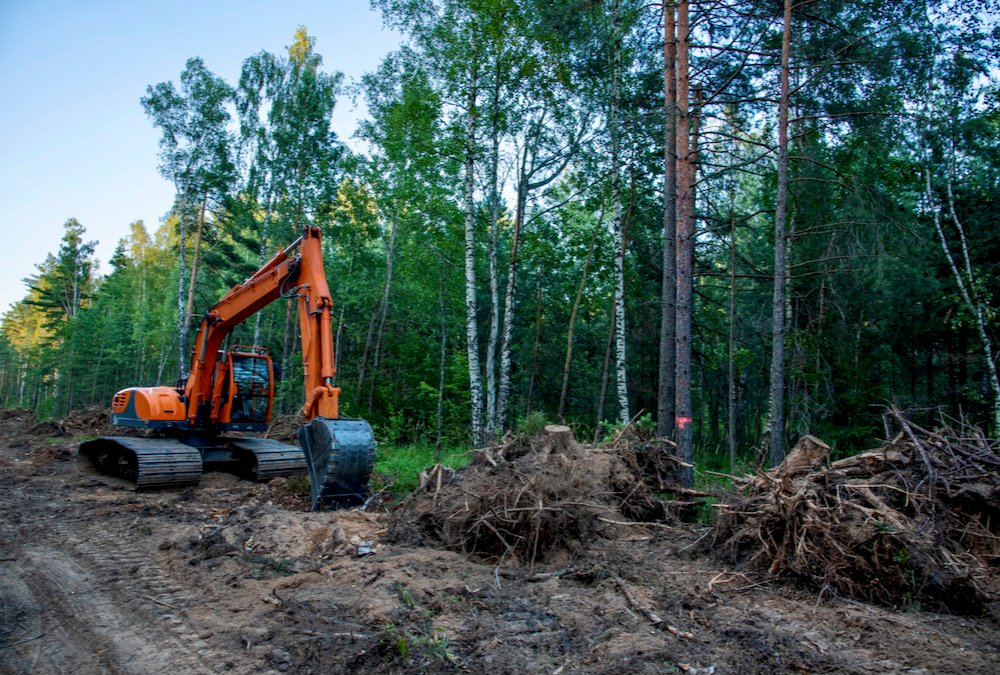Farmers push back against Chatham clear-cut bylaw

A Chatham-Kent bylaw banning the clear-cutting of woodlots and woodlands has generated frustration and feelings of exclusion in policy development among some Chatham farmers.
Passed by municipal council on April 26, the temporary, 120-day bylaw pertains to wooded landscapes more than half an acre in size, and a specified density of trees.
It comes as council and municipal staff determine how to approach wider environmental policies within the community, and how they will be incorporated into its pre-existing Natural Heritage Strategy, which is an effort to address environmental issues such as continued loss of tree cover via a variety of means.
Why it matters: Chatham-Kent intends to update its environmental policies but some within the farm community feel left out.
The overall intention of the temporary bylaw, according to the municipality’s website, is to address “the removal of all, or substantially all, of the trees within any portion of a woodland or woodlot” where the area of tree cover is in excess of the aforementioned acreage.
It is set to expire Aug. 24.
If less than 0.1 hectares (approximately 0.25 acres) of the woodlot/woodland is removed, it is not considered clear cutting under the bylaw. So, some selective harvesting is still permitted.
Gabriel Clarke, growth and sustainability manager for Chatham-Kent, says the bylaw was brought forth by Wallaceburg councillor Aaron Hall in part due to a concern that woodlot clear-cutting would spike as the municipality revisits environmental policy, including woodlot management.
Such concerns are not without precedent, as the public consultation period before adoption of the Natural Heritage Strategy in 2013 and 2014 coincided with a loss of between 1,000 and 1,300 acres of Carolinian woodland.
Farmers feel targeted
A group of farmers have created the Chatham-Kent Landowners Association in response to the bylaw. Brian Wright, a member and spokesperson for the group, says they are concerned about the temporary ban and what they perceive to be a move to a full ban once the current bylaw expires.
Wright says the ban disproportionally affects landowners and the municipality did not consult them before developing and accepting the bylaw. He says public consultation involved a survey that they perceived as pro-bylaw, with no opportunity for comments.
“We don’t have a problem getting together with them,” says Wright. “If the county wants to work something out, why didn’t they invite us? If you want to put something in place, everybody has to be involved.”
The Heritage Strategy was adopted in 2014 and included ways to work with the agricultural community. Wright says this structure was going to work but the municipality “dropped the ball” by not following through with its stated commitments.
He says most landowners are conscious of the low amount of tree cover in the county and of the need to not remove trees unnecessarily. The bylaw makes it more difficult to remove problem trees and scrub but has few checks on tree and land loss for urban development, he added.
The Kent Federation of Agriculture has also opposed the temporary ban, stressing the importance of farmer participation in environmental policy updates.
Confusion around the purpose of consultation
Clarke says the municipality notified 2,800 landowners via letter about the bylaw’s passage. A radio and newspaper campaign was also initiated. The public consultation process on tree cutting and other environmental policies followed the bylaw implementation and closed July 9.
Speaking as an administrator, Clarke says he believes confusion about the consultation process stems in part from a misinterpretation of what the community survey was designed to do.
It was intended to highlight the tree cover-related policy options the community would be willing to support, including education and incentive programs in addition to regulation, he says. It did not ask for a simple yes or no on a permanent cutting ban.
“Our goal as an administration is to try and distill that into some kind of coherent report for council to consider,” says Clarke in reference to 3,600 survey responses.
“Council’s current direction really only focuses on the current issue. It captures all woodlots, but the vast majority exist on private agricultural lands. The engagement process was designed to respond specifically to develop council’s motions.”
Regarding tree cover and the threat posed by urban rather than rural pressures, he says no specific direction has been provided to the administration by council.
“What we tried to do with the engagement process was focus specifically on council direction and let the community identify additional opportunities for stewardship… If there is consensus in the community, if we’re doing something on woodlots, we should walk the walk and enhance the natural environment in other areas.”
Source: Farmtario.com

